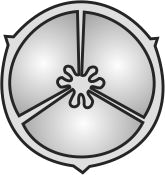333300
Read the following statements and find the suitable option.
I. Generally petals are green,leaf like and protect the flower in the bud stage.
II. Sepals are brightly coloured to attract insects for pollination.
III. In some flowers like lily, the calyx and corolla are not distinct and are termed as perianth
IV. Each ovary bears one or more ovules attached to a flattened, cushion like placenta.
V. A flower may be trimerous, tetramerous or pentamerous when the floral appendagesare in multiple of 3,4 or 5 , respectively
333303
Match the following placentation types given in Column I (Placentation Types) with their examples given in Column II (Examples) and choose the correct combination from the options given below.
Column I
Column II
A
Basal
P
Dianthus
B
Free central
Q
Pea
C
Parietal
R
Lemon
D
Axile
S
Marigold
E
Marginal
T
Argemone
333300
Read the following statements and find the suitable option.
I. Generally petals are green,leaf like and protect the flower in the bud stage.
II. Sepals are brightly coloured to attract insects for pollination.
III. In some flowers like lily, the calyx and corolla are not distinct and are termed as perianth
IV. Each ovary bears one or more ovules attached to a flattened, cushion like placenta.
V. A flower may be trimerous, tetramerous or pentamerous when the floral appendagesare in multiple of 3,4 or 5 , respectively
333303
Match the following placentation types given in Column I (Placentation Types) with their examples given in Column II (Examples) and choose the correct combination from the options given below.
Column I
Column II
A
Basal
P
Dianthus
B
Free central
Q
Pea
C
Parietal
R
Lemon
D
Axile
S
Marigold
E
Marginal
T
Argemone
333300
Read the following statements and find the suitable option.
I. Generally petals are green,leaf like and protect the flower in the bud stage.
II. Sepals are brightly coloured to attract insects for pollination.
III. In some flowers like lily, the calyx and corolla are not distinct and are termed as perianth
IV. Each ovary bears one or more ovules attached to a flattened, cushion like placenta.
V. A flower may be trimerous, tetramerous or pentamerous when the floral appendagesare in multiple of 3,4 or 5 , respectively
333303
Match the following placentation types given in Column I (Placentation Types) with their examples given in Column II (Examples) and choose the correct combination from the options given below.
Column I
Column II
A
Basal
P
Dianthus
B
Free central
Q
Pea
C
Parietal
R
Lemon
D
Axile
S
Marigold
E
Marginal
T
Argemone
333300
Read the following statements and find the suitable option.
I. Generally petals are green,leaf like and protect the flower in the bud stage.
II. Sepals are brightly coloured to attract insects for pollination.
III. In some flowers like lily, the calyx and corolla are not distinct and are termed as perianth
IV. Each ovary bears one or more ovules attached to a flattened, cushion like placenta.
V. A flower may be trimerous, tetramerous or pentamerous when the floral appendagesare in multiple of 3,4 or 5 , respectively
333303
Match the following placentation types given in Column I (Placentation Types) with their examples given in Column II (Examples) and choose the correct combination from the options given below.
Column I
Column II
A
Basal
P
Dianthus
B
Free central
Q
Pea
C
Parietal
R
Lemon
D
Axile
S
Marigold
E
Marginal
T
Argemone
